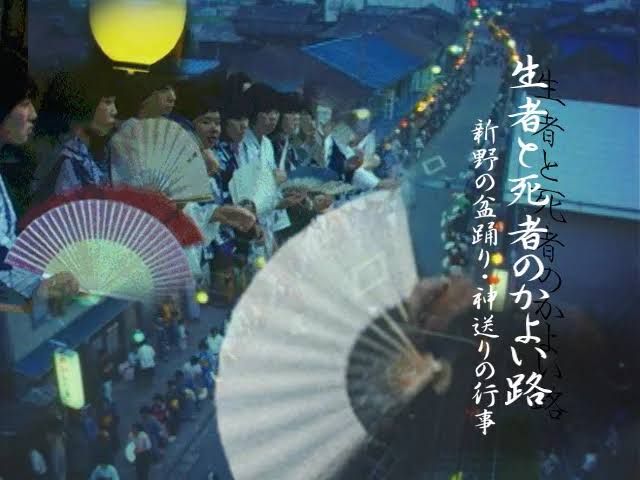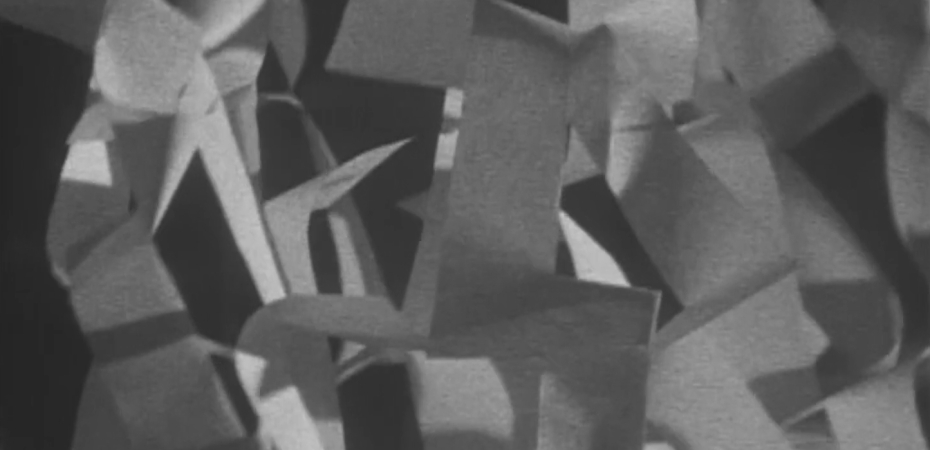As a sort of work in progress, draft for a possible future research, or simply as a trace of a significant, and very rare viewing experience, I have decided to publish, unedited, the notes and reflections I took while attending the Noda Shinkichi’s retrospective, organized at the Yamagata International Documentary Film Festival, in October 2023.
A total of 38 films were screened in 5 days; you can read the synopsis of each film here.
Below you can find the notes I took on day 4 (my notes on the first two days, and the third one):
Day 4
The Mikagura Festival of Tomiyama Village 1985
Opens with 1970s folk music. Shots of mountains. Graphs. Photos in black & white explaining how part of the town was moved because of the construction of a Dam.
Production of tea and shitake mushrooms.
Cut to new credits: 1985 January 3rd and 4th. Creative way to use multiple openings. In the following films, there are multiple endings.
Describing step by step each phase of the festival. Preparing mochi. Purifying rooms, musical instruments, and people who will join the festival. Offerings to the tree.
No direct sound. Music and images combined.
Small room. Dances start.
Men, men, men. No women for most of the time. We see some of them in the audience later.
All the music is very similar, what changes is the dance. Ichi no mai, Shishi mai, Yubayashi no mai, Oni no mai.
Interesting: drunk (?) young people interacting freely with the masked dancer. Masks are very expressive and feel very specific to the area.
Atmosphere is very “casual” (or better, popular?) from the very beginning. It’s a ritual, but not hyeratic. Everyone seems relaxed, joking, while others are performing, the singing and chanting themselves are not perfect, it’s all over the place. After all it’s a matsuri, not a ceremony or only a performance.
Meaning of matsuri: giving new life to people and area, renewing life.
The Procession of Weird and Wonderful Masks 1988
No narration, solemn music.
Shot of people wearing masks, all together on the stairs.
Panning on each mask slowly. Amazing colours and shapes. Again they feel very specific of the area. It’s a film about masks.
Parade. Close-ups of masks and people’s faces.
Like in the films about strikes/protests: images filmed on the street in the parade shaking-style, are alternated with shots from above, and low angles shots from street level. Fast editing.
End: introducing each mask, explanation cards, mask on a black background. No sound in this part.
Sarushima-Island With a Fort: Ruins and Graffiti 1987
Music. No narration. Shots stay longer on soil, walls, stones. Panning.
Concrete shelters. Holes in the walls (bullets). Graffiti and traces of war overlap. Different times.
Sometimes there is no sound. Sometimes music (guitar).
Camera pans on walls, entrances, tunnels, corridors.
The ending is very beautiful (Noda master of ending in this period): black frame with a tiny bright square (entrance/exit out of tunnel) oscillating for a long time. Bright spot gets bigger. We’re out. Cut to the island (mirroring the beginning). Zoom out slightly. Stay on the image for long. End. Filmed between in 1968 and 1983 (really?!) edited together in 1987.

The Feast of the Gods on a Winter’s Night: Toyama’s Shimotsuki Festival 1970
B&W. Images of the area. Music. Images of fire. Images of shide (paper hanging from the ceiling). Images of hands. Close-ups of hands. Fire. Water boiling.
Fire and smoke are often on the foreground.
Dancers are almost never shown from far away. Camera is in the middle, part of the constellation formed by people and objects. Performers shown in a fragmented way. Everything is continuously cut. Camera goes back to shide, fire and water many times. Kitamura explained in the after talk that fire and water come together in the ceremony.
Chants, dances and images become monotonous like in a trance. Cinema-trance.
No narration or explanation. Just a card at the beginning.
As Kitamura Minao said: this is a festival captured without knowing almost anything about it. Sensorial.
The most experimental of the folklore films.
Exceptional.
Good Road for the Living and the Dead: Niino Bon Odori, Festival to Send Off the Gods 1991
People dancing for three days welcoming the dead during Obon.
Again, shot from above, from street level and low angles. Colourful.
Impressive images of all the town dancing. Different times soak the images in different lights (twilight, dawn, etc.)
Singing and dancing together as in utagoe: identity making?
Young people make kind of a mess, but scenes are kept in the movie like in the first movie of the day. The film takes its time, slower rhythm, music and dances envelop the viewer slowly. Cinema-trance, but of a different sort from the previous.
People move toward the graveyard. Burning the small floats. The spirits of the dead.
Fascinating and creative the ending, long time black screen, music. The dead.
Personal note: there’s a similar festival in Gifu (Gujō Hachiman, 3 days in Obon) but it’s so packed with tourists that we can’t even enter the town (link to Hayachine and tourism). Impossible now to film a festival like Noda did.
Snow as Flowers: Niino’s Snow Festival 1980
Opens with the deep blue of the sky and a beautiful map of the area.
Constructed like Mikagura Festival: documenting each step of the festival. Shots and scenes are here much longer.
Again, Noda does not shy away to show the rough/popular side of the festival: two guys parading are drunk, people interacting quite directly and roughly with the performers, one guy is caught yawning.
Wondering is the presence of the camera enhanced or altered the behaviour of some participants. Less poetic and experimental compared to the two previous films. Noda getting more interested in folklore itself than in the representation of it?
to be continued

[…] As a sort of work in progress, draft for a possible future research, or more probably simply as a trace of a significant and very rare viewing experience, in the past weeks I published the unedited notes and reflections I took while attending the Noda Shinkichi‘s retrospective (Yamagata International Documentary Film Festival, October 2023).A total of 38 films were screened in 5 days (you can read the synopsis of each film here).My thoughts on days 1-2, 3 and 4. […]
LikeLike